Growing your own vegetables is exciting. It means you get complete control over what goes in the ground and on the crops. You may also get lucky enough to pick your favorites (depending on where you live). But it is important to plant things at the right time to help them thrive. After all, the goal is a successful harvest! There are still crops that grow well when they get planted in the height of the summer. So, if you were late for the gardening party, don’t worry. Below, we cover seven root vegetables to plant in July.
1. Carrots
Carrots (Daucus carota) are a classic root vegetable that can be grown throughout much of the year. July is actually the optimal time to sow carrot seeds. Getting them in the ground in the heat of the summer will produce a fantastic fall crop.
Sow the seeds directly into well-draining soil. Carrots need loose soil, so remove stones and break up any clumps. Space the seeds about 2 inches apart and cover them with a thin layer of soil. Keep the soil consistently moist until germination, which usually takes around 10 to 20 days. Ideally, carrots prefer full sun. But they can tolerate some shade.
Harvesting typically happens about 60 to 80 days after planting, depending on the variety and the weather. Carrots should be firm and brightly colored. Beware. They do love to get stuck in the soil. So gently loosen the area around the carrot before pulling. Enjoy your harvest raw, in salads, steamed, roasted, or even made into a carrot cake.
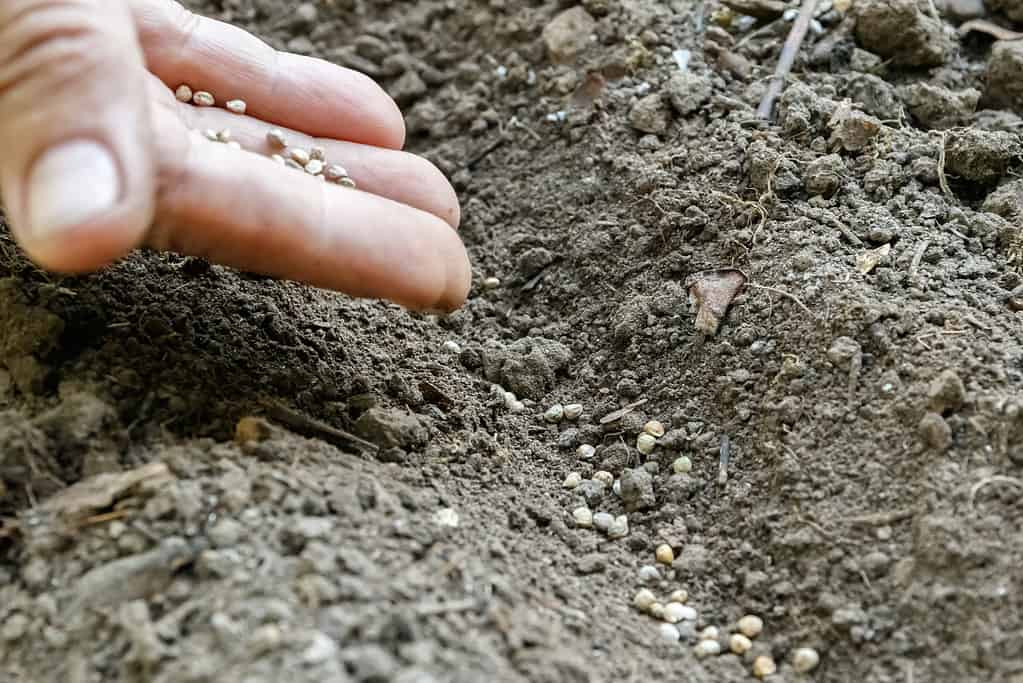
Planting carrot seeds in the garden is quick, but they take some initial care to germinate properly.
©iStock.com/lprising
2. Beets
Beets (Beta vulgaris) are versatile root vegetables that come in lots of colors, including red, yellow, and striped. Beets are a fantastic fall crop. And, believe it or not, in some growing zones, that means planting in July.
They love fertile soil with good drainage. So, if the ground is questionable, consider adding compost or well-rotted manure to improve its fertility. Sow the seeds about 1/2 inch deep and 3 inches apart, covering them lightly with soil. Beets prefer full sun but can tolerate some temporary shade.
Germination usually takes about 5 to 10 days. You can speed this process up by soaking the seeds for about 24 hours before planting. Thinning is necessary so the beets have enough space to grow. Thin seedlings when they are a few inches tall. Depending on the variety, this veggie is often ready within 50 to 70 days after planting. Your harvest can get pickled, roasted, boiled, or grated raw in salads.
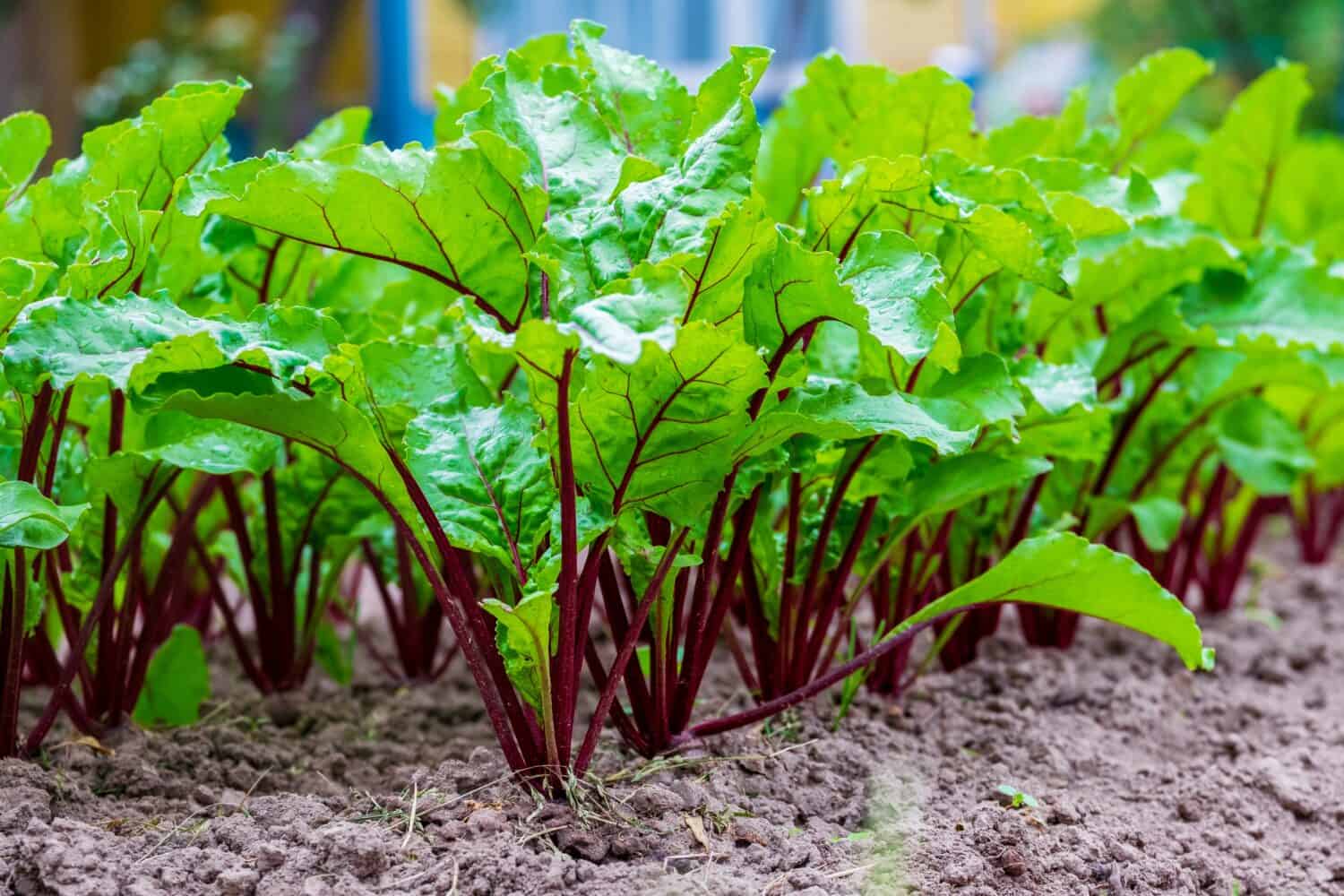
Beets are a wonderful addition to your late summer/early fall garden. You can harvest and eat some of the greens while waiting for the beet to grow.
©Denis Shitikoff/Shutterstock.com
3. Radishes
Not only can you plant radishes (Raphanus sativus) in July, but you can also keep planting them every two weeks through the growing season. They are quick-growing root vegetables that add a spicy crunch to salads and other dishes.
Sow radish seeds directly into the soil. Choose a sunny location with well-draining soil. Sow the seeds about 1/2 inch deep and 1 inch apart, and cover them with soil.
Germination usually takes 3 to 7 days. Once the seedlings are a few inches tall, thin them to about 2 inches apart. Radishes mature quickly and can get harvested within roughly 20 to 30 days. Harvesting is fairly straightforward. Simply gently pull them out of the ground. Enjoy them sliced in salads, pickled, or used as a garnish.
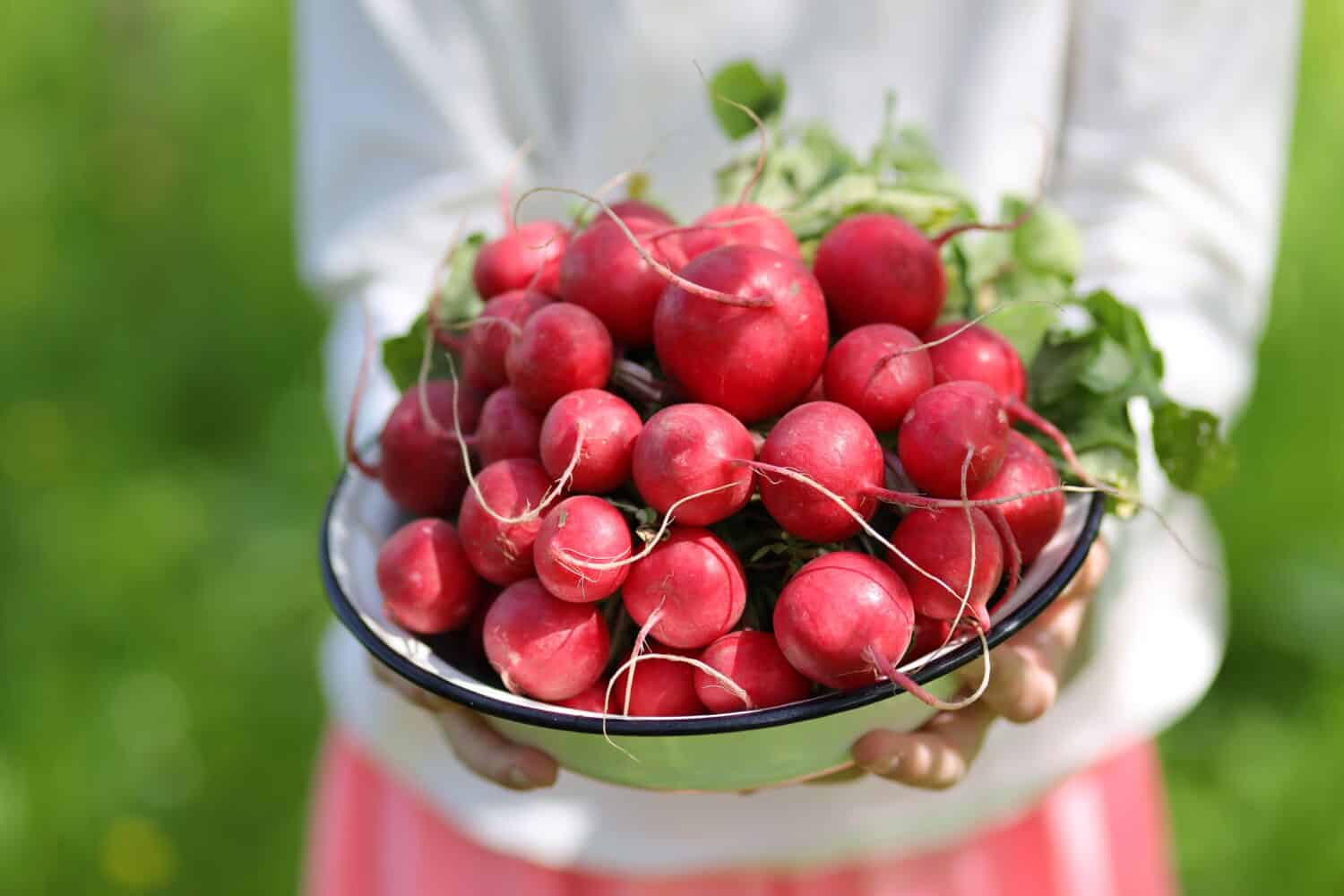
Radishes are a great way to get an abundant harvest quickly.
©Andrii Zastrozhnov/Shutterstock.com
4. Turnips
Don’t discount the turnip (Brassica rapa). This popular root vegetable has a delicate flavor. You can eat them raw and cooked (although the younger and smaller ones taste better raw). Much like beets, they are a stellar fall crop if you get them in the ground during July.
Sow turnip seeds directly into the ground. Prepare the soil by removing stones and breaking up clumps so they have room to stretch their “legs.” Turnips like rich, well-draining soil. Plant the seeds about 1/2 inch deep and 2 inches apart, covering them with soil. You can expect germination in roughly 5 to 10 days.
Thin the seedlings once they have some true leaves. Make sure the remaining seedlings are 4 to 6 inches apart. Turnips are ready to harvest around 40 to 60 days after planting, depending on the desired size. They should be firm and have smooth skin. Boil them, mash them, roast them, or pop them in stews and soups.
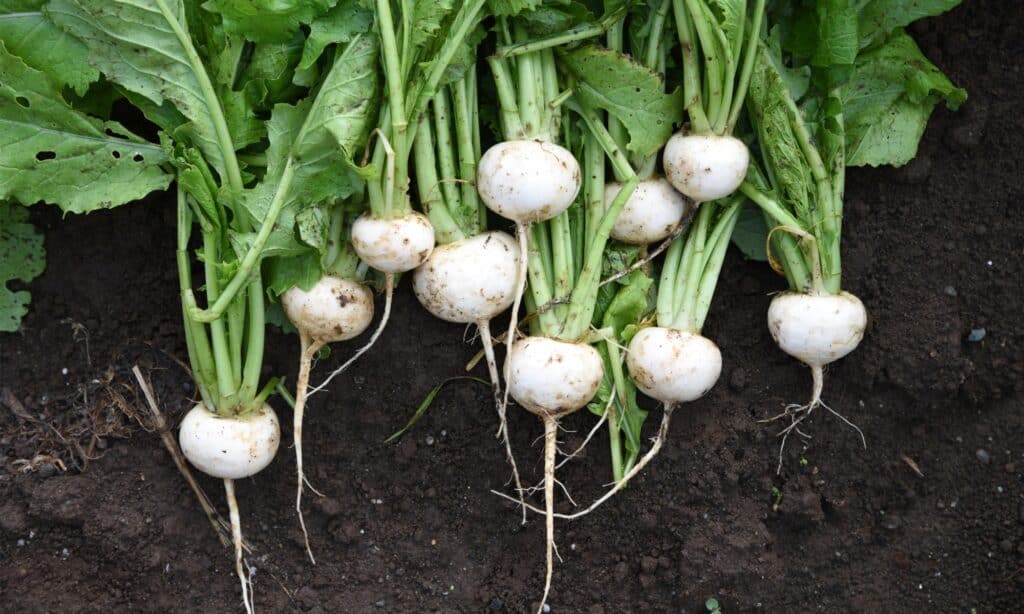
There are many varieties of turnips to choose from, including some quick-growing options.
©iStock.com/undefined undefined
5. Rutabagas
Scientists believe rutabagas (Brassica napus) may be a cross between a turnip and a cabbage. They look very similar to turnips but have a sweeter flavor. These are slightly slower-growing root vegetables but are still a great option for July if you have a decent growing season.
Rutabagas love fertile soil, so take some time to prepare your bed in advance. The best way to do this is by adding compost, which helps improve overall soil health. Sow the seeds about 1/2 inch deep and 2 inches apart, then cover them with soil. They thrive in full sun.
Expect germination within 5 to 10 days. After true leaves form, go ahead and thin the seedlings to 6 to 8 inches apart. You can start harvesting around 90 to 110 days later. Rutabagas should be firm and have smooth skin when you harvest them. They are tasty mashed, roasted, or used in casseroles and stews.
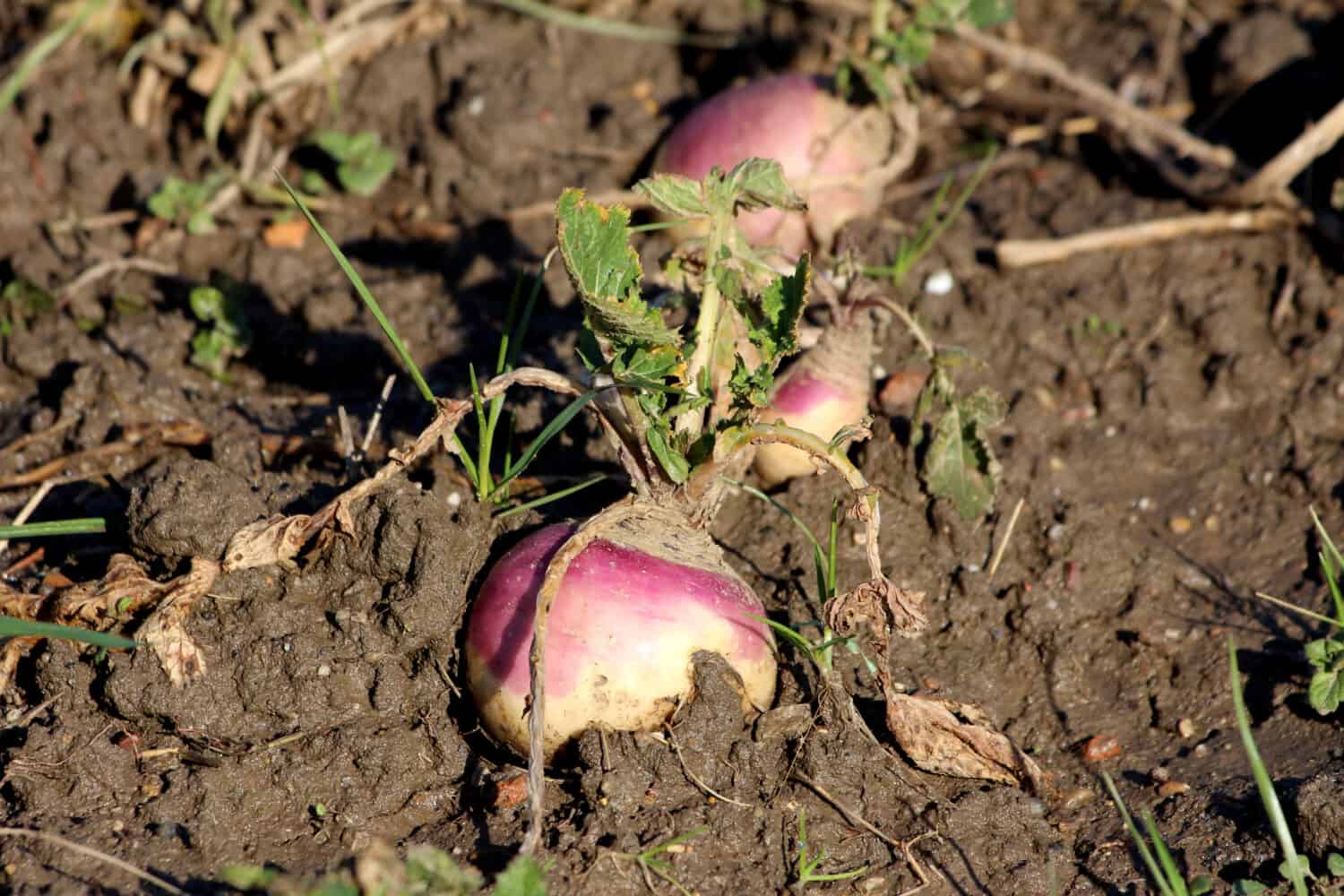
Take your roasted vegetables up a notch when you add rutabagas.
©Hecos/Shutterstock.com
6. Parsnips
This option is primarily for those living in warmer regions. Parsnips (Pastinaca sativa) can get planted in July, provided the ground does not freeze in the winter. This delicious root vegetable is slow-growing.
Like carrots, parsnips need loose, high-quality soil. Sow the seeds in a spot that receives full sun. Plant them about 1/2 inch deep and 2 inches apart before covering them with soil.
Parsnips do not germinate quickly. It may take them three weeks to finally pop out of the ground. Thin the seedlings once you have some true leaves to encourage better growth. Your parsnips should be ready around 90 to 120 days after planting. Parsnips can get roasted, mashed, made into soups, or added to stews.
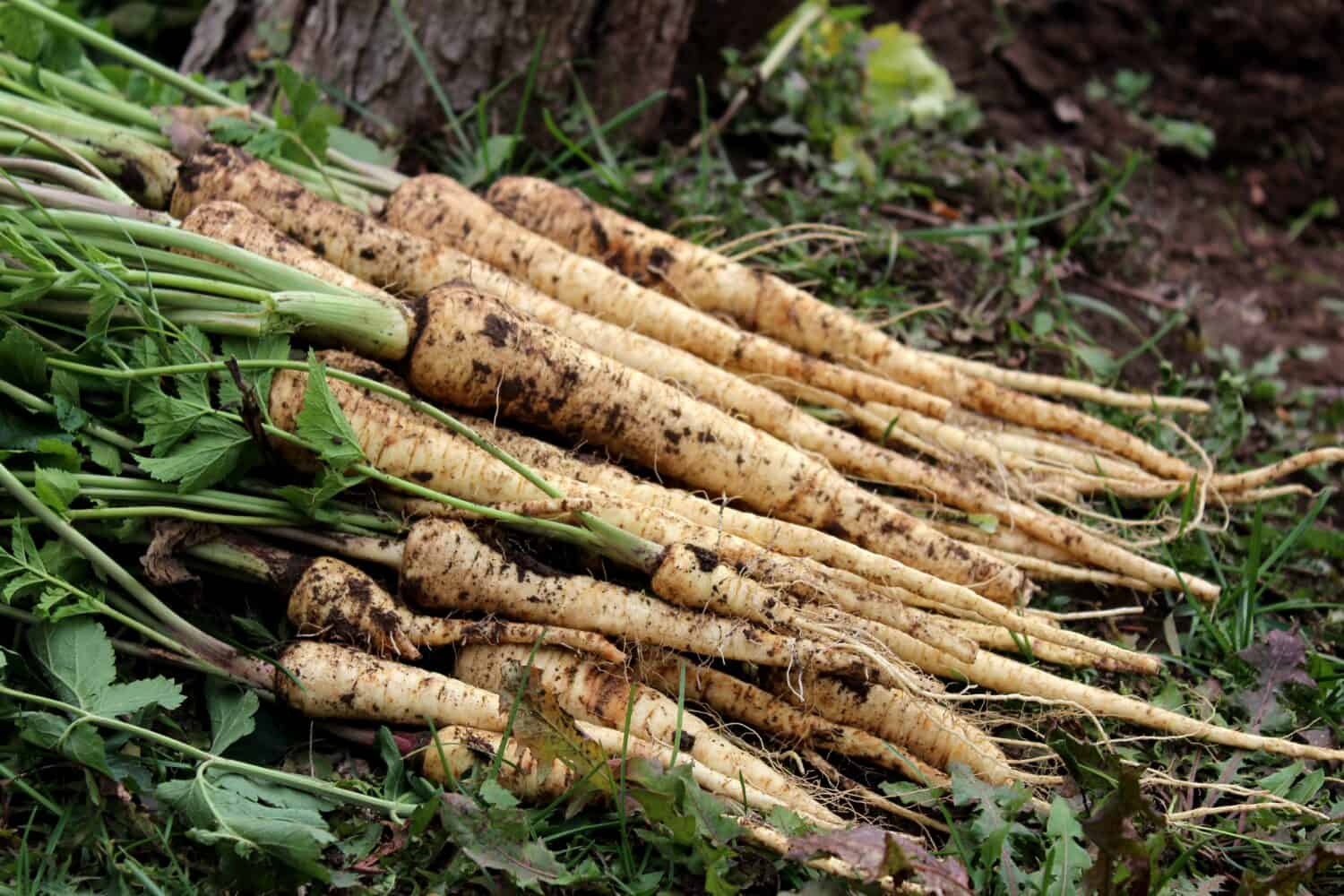
Parsnips look very similar to carrots.
©Svetlana SG/Shutterstock.com
7. Horseradish
Take a walk on the wild side with horseradish (Armoracia rusticana). This pungent root vegetable is in the Cruciferae family. You may be most familiar with it as a condiment or thinly sliced on a dish. July is slightly early to get your horseradish in the ground, but not out of the question. It should do well if you want until the very end of the month.
Plant horseradish root cuttings in loose, well-draining soil. Choose a sunny location with fertile soil. Dig a trench about three inches deep and place the root cuttings at a slight angle and 18 inches apart. Leave the top portion just below the soil surface. Fill the trench with soil.
Horseradish requires consistent moisture, so water regularly. But use caution to avoid overwatering. Expect to wait a while for your horseradish root system to develop. You won’t get to enjoy your harvest until the spring. However, when you pull the roots out, there is plenty of ways to enjoy them. Horseradish can be grated and used in sauces, dips, or added to marinades.
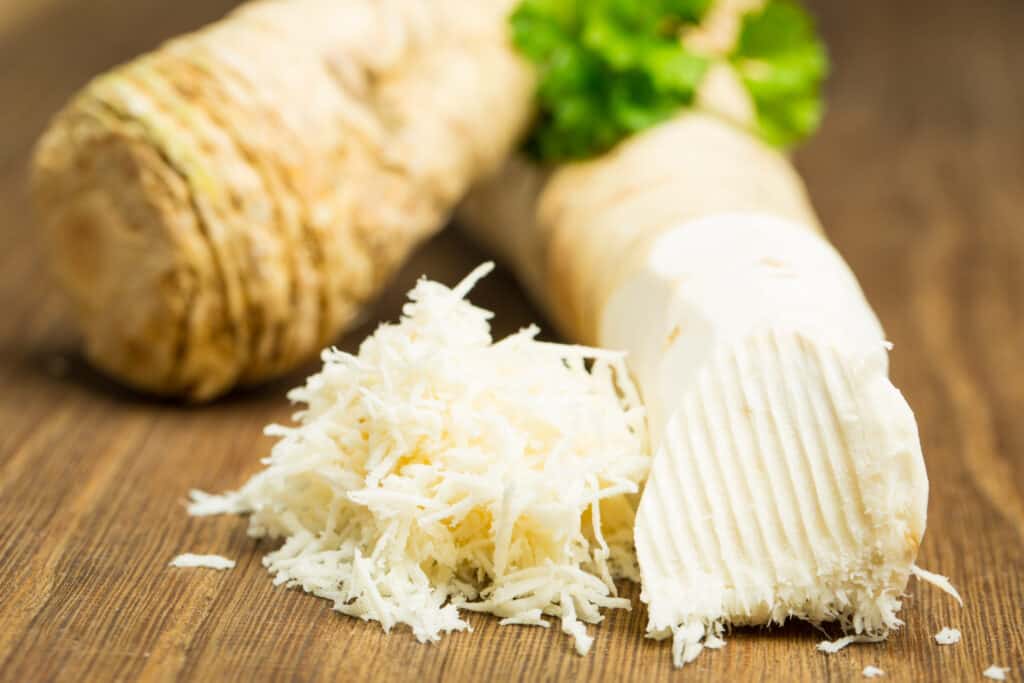
Horseradish is ideal grated and added to sauces or marinades.
©iStock.com/unpict
The photo featured at the top of this post is © 5 second Studio/Shutterstock.com
Thank you for reading! Have some feedback for us? Contact the AZ Animals editorial team.







